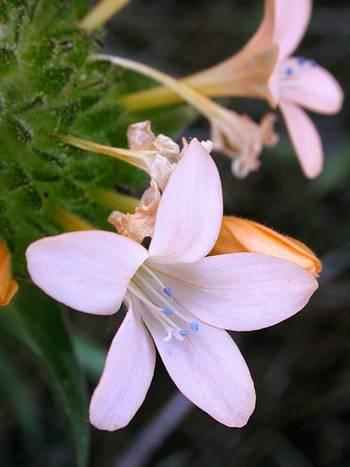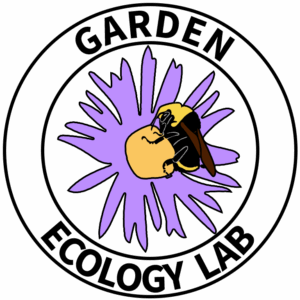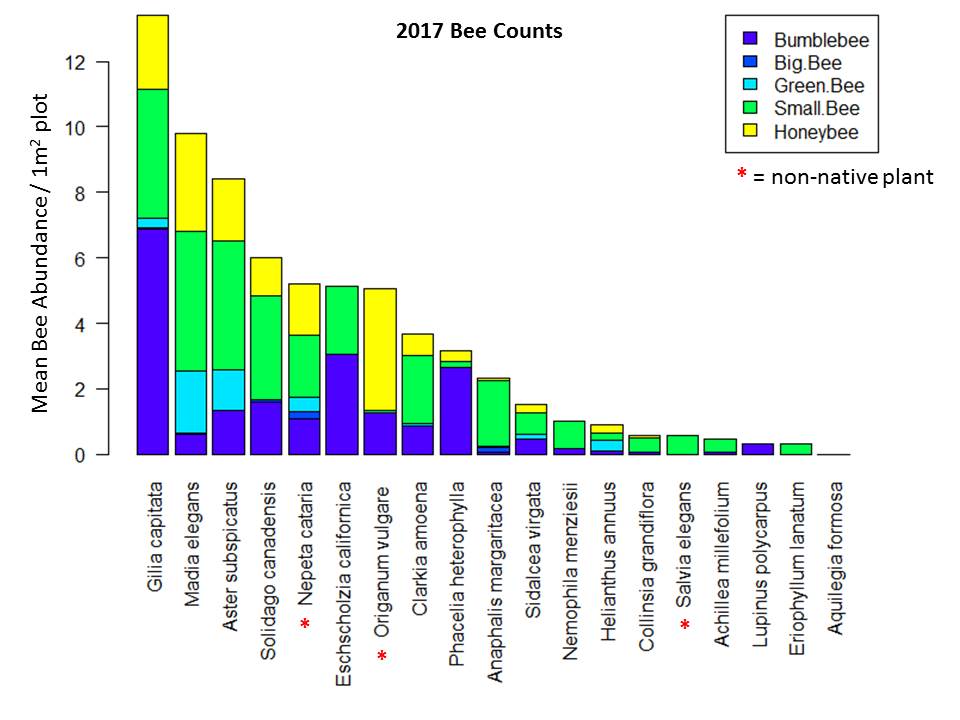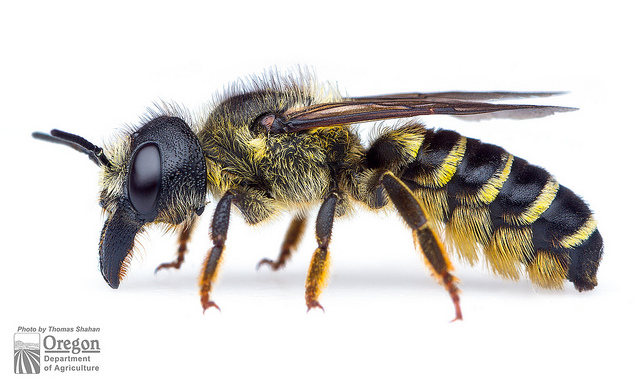This Plant of the Week entry is written by Reed Manderfield, an undergraduate research and lab assistant studying Environmental Science at Oregon State University with a concentration in Applied Ecology.
I was first introduced to the large-flowered collomia (Collomia grandiflora) over the summer of 2025, while visiting gardens with Taylor Janecek for their research project on Vascular Flora of the Pacific Northwest Pollinator Gardens. I was immediately fascinated by the bright blue pollen the flowers produce, which contrast beautifully against the lighter cream or salmon-colored petals (1).

Not only is this Oregon native an attractive addition to any garden, but it’s also an excellent source of food for many different pollinators. Butterflies and hummingbirds drink the sweet nectar tucked within the tubular region of the flower (2). The alluring, blue pollen is particularly captivating to bumble bees (Bombus) and sweat bees (Halictus)(3).
Collomia grandiflora is also attractive to pollinating flies. In the summer of 2024, Nina Emond Miller’s research team collected some species of Syrphidae from these interesting flowers. These species included Sphaerophoria sulphuripes, Eupeodes fumipennis, and Platycheirus trichopus (4). You can read more about her research in her recent blog post, Science Behind the Scenes: Hover Fly Study.

Growing 1 meter tall from a taproot system, C. grandiflora is quite hardy (1). The flower grows naturally in open woods and meadows, but it is also easy to care for in your garden due to its high tolerance to various conditions (2). It can survive in moist or dry soil, full or partial sunlight, and low or moderate elevations (1). In fact, one of the common names for this plant is ‘mountain-trumpet’, after its shape and presence on both sides of the Cascade mountains (2). This makes it well-suited for Willamette Valley pollinator gardens!
As the name large-flowered collomia suggests, this species is known for its large, flowering head. From April-July, a cluster of flowers will bloom on the round, green top (2). A word of caution if you’re doing garden work without gloves – your fingers might get sticky if you touch the top! This is because it contains seeds that get sticky when they’re wet – a trait shared by the genus Collomia. Its name is even derived from the Greek word kolla, meaning ‘glue’ (5).

This showy, native ornamental makes for a pleasant addition to Willamette Valley gardens, as it is highly tolerant of a wide variety of growing conditions and provides great floral resources for pollinators. The blue pollen also makes it a great conversation starter or a fun learning opportunity for kids.
References
- Collomia grandiflora (2021). The Evergreen State College. https://wikis.evergreen.edu/pugetprairieplants/index.php/ Collomia_grandiflora#cite_note-6
- Collomia grandiflora Douglas ex Lindl. (n.d.) OregonFlora. https://oregonflora.org/taxa/index.php?taxon=4204
- Melittoflora. (2025). Oregon Bee Atlas. https://oregon-bee-project.github.io/melittoflora/viz.html
- Emond Miller, N.M., Fitzgerald, S.J., Langen Swartzendruber, L.F., Perry, A.C., Case, L.A., Hayes, J.J-M., Vatcoskay, G.M., Legier, K.N., & Langellotto, G.A. (In Prep.). Syrphidae (Diptera) communities and their floral associates in urban Oregon gardens. Annals of the Entomological Society of America.
- Jennings, N. L. (2011). Central beauty: Wildflowers and Flowering Shrubs of the Southern Interior of British Columbia. Rocky Mountain Books.




